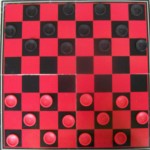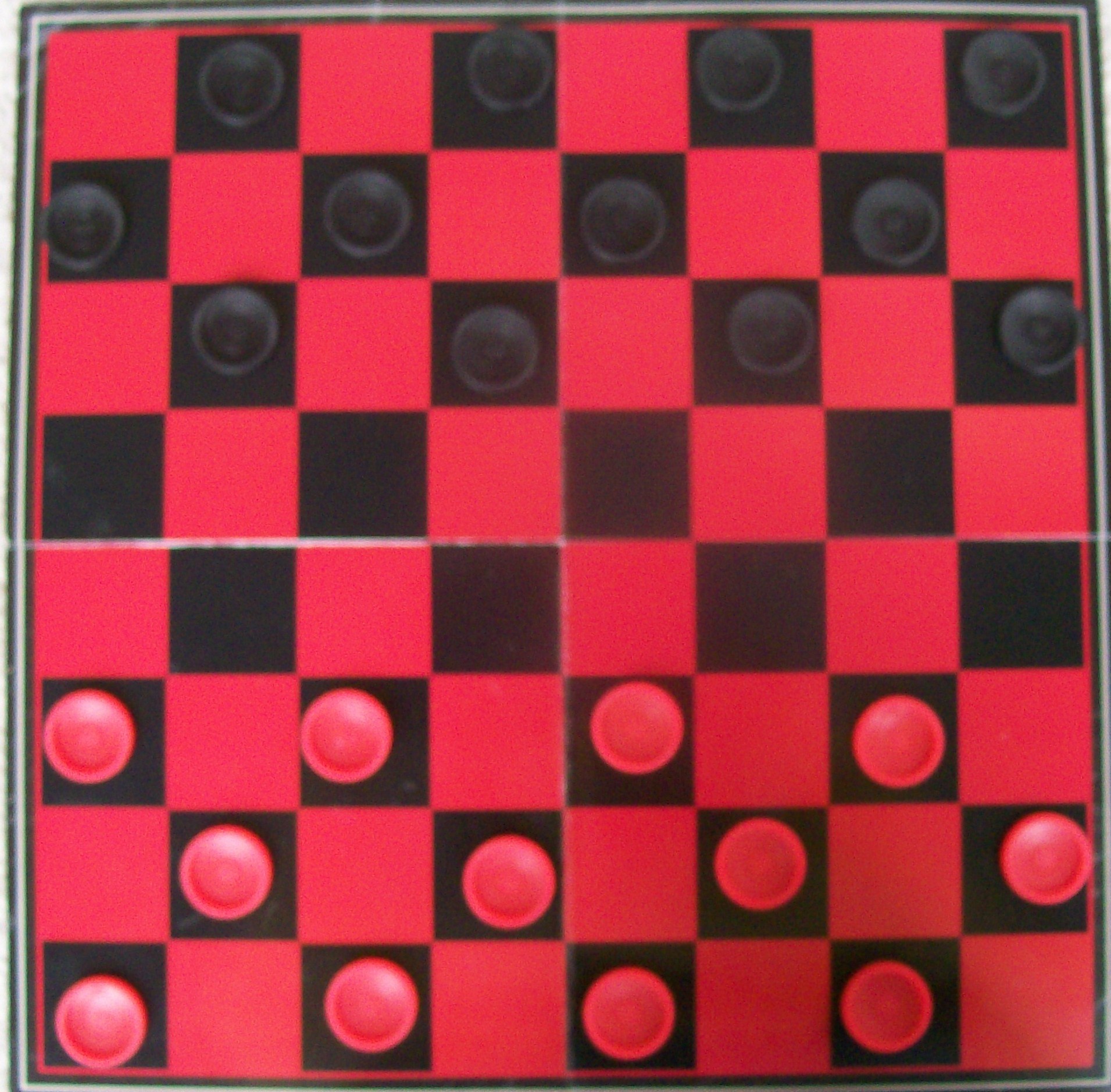The game of checkers (also called draughts) is believed to date back to the twelfth century and is a common two player game played today.
The rules for playing checkers can vary depending on who or where a person is playing. The game is played all across the world in slightly different forms or with variations on how to exactly play. The following directions are for American checkers.

The game of checkers is played with two players and on a board which is identical to a chess board. It is an 8×8 gridded surface with squares of two alternating colors.
Players each have twelve pieces which are placed in the first three rows on the darker spaces of the board on each side. A helpful rhyme in remembering which way a board is placed is, “White in the Right” (or the light in the right, referring to the bottom right corner of the board).
The darker piece moves first. Usually this is the black piece since the most popular colors used for American checkers is black and red pieces.
Movement on the board only occurs on the dark empty spaces. Players move their pieces in the following ways:
As a single piece (not crowned)
- Players move forward diagonally one space at a time
- If a player’s piece is next to an opponent’s piece (which has an empty space beyond) a player must jump over the opponent’s piece. This is considered a ‘capture’ and the opponent’s piece is removed from the board. Multiple jumps or captures must also be made with a single piece in a turn. If there is more than one possibility to capture, a player is free to choose which capture they make. They can not capture their own.
A player’s piece is crowned when any of their single pieces reaches the opposite side of the board (their last row which is the opponent’s first row). When this happens, a player usually says, “King me”. On top of his piece is placed another of his pieces (acting like a crown). In some games the piece can be flipped. The flipside reveals an image of a crown and is considered crowned.
As a crowned piece (king)
- Players may move forward or backward diagonally only one space at a time
- Players must jump over an opponent if able forward or backward or both if multiple jumps can be made
The object of the game or the winner of the game is the player which captures all their opponent’s pieces or has successfully blocked their opponent from making a move. A draw may happen if both players are unable to win.

This page makes me think of the other page here I was looking at